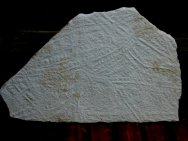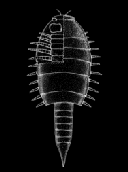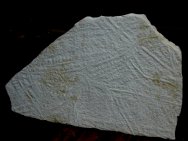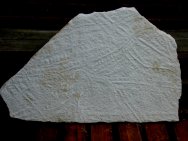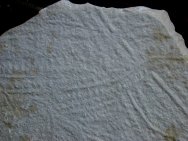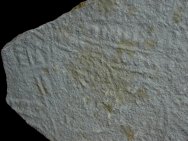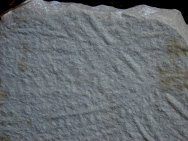Protichnites (Ichnofossils)
Trace Fossils (Ichnofossils) - Arthropod Trackway
Geological Time: Upper Cambrian (about 510 million years ago)
Size: 30.5 by 20.5 inches, and 2 inches thick
Fossil Site: Blackberry Hill Formation, Krukowski Quarry, Elk Mound Group, Mount Simon Sandstone, near Mosinee, Wisconsin
Fossil Code: DD315
Price: Sold
|
No shelly animals are found in the Krukowski quarry, only trackways (ichnofossils) and body impressions (such as in the case of the Jellyfish (Cnidarians) and Arthropod carapaces of the likely animal to have made Protichnites and Diplichnites trackways. Besides a few mysterious trackways that cannot be named, one finds Diplichnites, Protichnites and Climactichnites. Together, this quarry tells a story just now being researched by paleontologists - hopefully, the result will be some shedding of more light on when and how life first ventured from marine to land environment.
The maker of the Protichnites fossil trackways might also have been an animal resembling the extant but ancient horseshoe crab, except of an early design that lacked a hard shell to be preserved. Others have posited that Protichnites was a soft-bodied progenitor of the large, now extinct group of early predators, the Eurypterids (Chelicerate "biting claws" Arthropods). Still, the most popular choice is a member of the aglaspids, which is supported by putative body fossils of them found in the quarry. It is entirely rational that the animal maker of Protichnites also made the Diplichnites tracks. Diplichnites lacks the telson drag marks, which might be explained by behavior, locomotion, feeding behavior or even tide level - and so continues the mystery of these two ichnogenera in the quarry. This particularly large specimen is one of the finiest and most intriguing found at the site. There is a mryiad of footprints, footdrags or slashes, and tail drag marks left in the Cambrian-age sand. Tracks are generally overlayed, with some curved, some straight, and some sharply cuved. The hyporelief tracks are exceptionally thicker and higher than most, suggesting a helter-skelter flurry of many larger arthropods, that carved deep and wide grooves in the sand of a Cambrian shoreline. Also see: Cambrian Shadows Theme Park |
